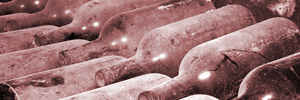





Tips on Bottle Aging
Written By: SUSANNE LOMATCH
Cellaring wines for at least two years can yield exceptional
results, especially for less-costly wines. But how can one tell a priori what will age well and what won’t?
I’ve been cellaring wines (red, white and rosé) for years, with mostly pleasant results: the
wines I start with are usually not as ‘mature’ and satisfying as the wines I end up with.
But I’ve also relied on what I’d call a gut instinct of what will age well, and in many
cases, I essentially just flipped a coin, betting that a little rest will pay off.
Some disclaimers. Along the way, I’ve often read that aging doesn’t improve most wine,
as winemakers focus on producing wines meant to be consumed within 12-18 months of
release. Quality white wines are acknowledged in this criterion, but so are reds. There is
merit to this, as winemakers are targeting a growing market of consumers and restaurants
that expect ‘perfectly balanced’ wines, and red wines that drink like they’ve been aged,
when they haven’t. However, the wines that truly achieve this goal are not as easy to find
as you’d think. Further, I’ve also read warnings that aging white wines is a sure recipe for
disaster – that the wines lose their ‘verve’ and turn south in taste and color. But my
experience has been that most white wines that are great young can also be great (but
distinctly different) aged. So my message here is to ignore the pundits and do some
experimentation.
So what technical information is out there that might help those of us with the penchant
to experiment with cellar aging bottled wines?
 Let’s start with chemistry. There are a myriad of different chemical components in wine
that affect taste, mouthfeel, smell or aroma, and color – from various acids to esters to
phenols (such as tannins). Roughly 5% of the volume of a wine contains the complex
chemical nature that contributes to varietal and specific vintage differences, the
remainder being water/alcohol/sugars. Tannins are normally associated as the variable
that has the most influence on the evolution process in wine aging. Tannins are
astringent, bitter plant polyphenols that derive from the seeds, stems and skins of grapes
(condensed tannins), but can also originate from the wood during barrel aging
(hydrolysable tannins), so both red and barrel-aged white wines contain tannins.
Condensed tannins, especially from seeds, can be harsh bitter, and are minimized during
the winemaking process. Unlike hydrolysable tannins, condensed tannins are less-easily
oxidized and can remain prominent in a wine for long periods. Polyphenols in wine can
be separated into two groups, flavonoids (tannins, anthocyanins, catechins, quercetin) and
non-flavonoids (resveratrol, hydroxycinamates). Flavonoids make up more than 85% of
the phenolic content in red wines and less than 20% of the content in whites, whereas the
majority of phenols in white wine are non-flavonoid hydroxycinamates.
Let’s start with chemistry. There are a myriad of different chemical components in wine
that affect taste, mouthfeel, smell or aroma, and color – from various acids to esters to
phenols (such as tannins). Roughly 5% of the volume of a wine contains the complex
chemical nature that contributes to varietal and specific vintage differences, the
remainder being water/alcohol/sugars. Tannins are normally associated as the variable
that has the most influence on the evolution process in wine aging. Tannins are
astringent, bitter plant polyphenols that derive from the seeds, stems and skins of grapes
(condensed tannins), but can also originate from the wood during barrel aging
(hydrolysable tannins), so both red and barrel-aged white wines contain tannins.
Condensed tannins, especially from seeds, can be harsh bitter, and are minimized during
the winemaking process. Unlike hydrolysable tannins, condensed tannins are less-easily
oxidized and can remain prominent in a wine for long periods. Polyphenols in wine can
be separated into two groups, flavonoids (tannins, anthocyanins, catechins, quercetin) and
non-flavonoids (resveratrol, hydroxycinamates). Flavonoids make up more than 85% of
the phenolic content in red wines and less than 20% of the content in whites, whereas the
majority of phenols in white wine are non-flavonoid hydroxycinamates.
Now that you’ve gotten a mouthful of all these chemicals, what do they mean in terms of
wine aging?
Taste and mouthfeel are most affected by the polymerization process that occurs among
flavonoids, after wine is bottled. Polymerization involves the combination of phenols into
chains and clusters of chains. Tannins become less bitter and more astringent, and with
further polymerization, will precipitate into the sediment you’ll find in many aged reds
(and even a few whites!), reducing astringency and producing the smooth, soft, or silky
tastes that are expected from a balanced wine. Acid precipitation and ester formation can
also affect taste/mouthfeel. Generally, acids enhance astringency from tannins, but they
also preserve color – less acidic wines undergo a higher degree of oxidation.
Aroma during bottle aging is greatly affected by the hydrolysation of the esters that were
originally produced by the fermentation process between yeast and sugars, and the
esterification of acids to produce new esters. The hydrolysation process degrades the
original ester content, while esterification of acids yields new esters with different aroma
characteristics, from the reactive combination of acids and alcohol. Varietal aromas are
usually the most stable during aging.